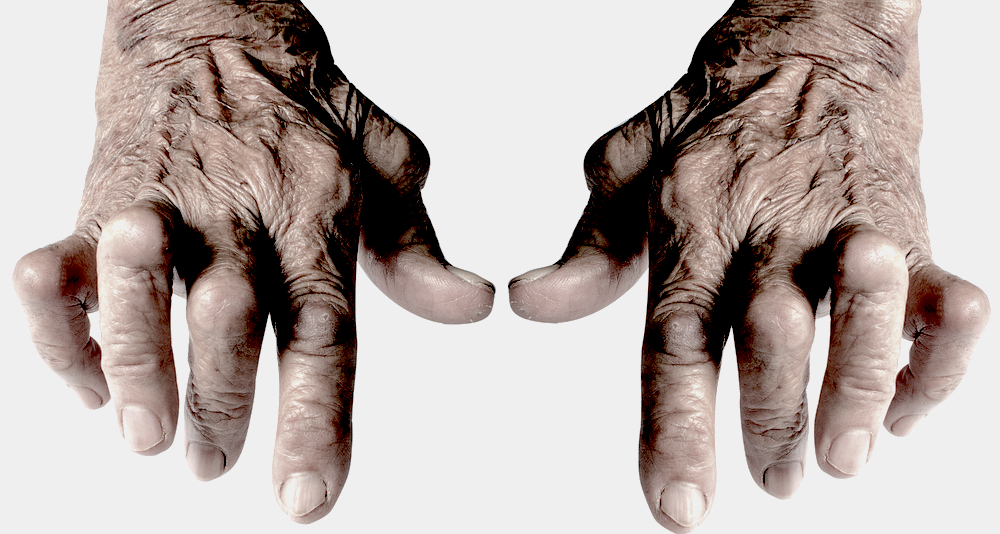Arthritis is one of the most common chronic conditions, affecting approximately 350 million people worldwide. There are more than 100 different types of arthritis, each with different causes, symptoms and treatment options. We look at three of the most prevalent forms of this often debilitating disease.
Osteoarthritis (OA)
OA is a degenerative condition that causes the cartilage cushioning between joints to break down. This results in pain, swelling and problems with moving the joint. OA can affect any joint, but is most common in weight-bearing joints like your knees, hips, and back.
OA is the most common form of arthritis. It can occur naturally with age from wear and tear of the joints, but can also happen as a result of an injury or from being overweight. Extra body weight places extra stress on your joints.
Symptoms of OA include:
- Stiff, swollen, painful joints.
- Tender joints that are warm to the touch.
- Pain made worse by exercise or any other physical activity.
- A crunching feeling or grinding noises in the joint.
- Limited range of motion of the joints. You may find it difficult doing everyday tasks like getting dressed, combing your hair, and climbing the stairs.
As OA worsens, cartilage within a joint will wear away and eventually the bones will start to rub against each other. This results in further joint damage, pain, and loss of motion.
Treatment for OA typically involves medication and exercise. Nonsteroidal anti-inflammatory drugs (NSAIDs) are usually used when necessary for pain relief, and physical therapy is used to strengthen the muscles around the joint and to improve joint function. In severe cases, surgery may be necessary.
Losing weight and staying active can help you manage the symptoms of OA and slow its progression.
Rheumatoid arthritis (RA)
RA is a chronic autoimmune condition that causes the immune system to attack its own tissues, including the delicate tissue lining the joints (called the synovium). The synovium thickens, causing swelling and pain in and around the joints.
There’s no known cause of RA, but there may be a strong genetic predisposition. There is some evidence to suggest that environmental factors, hormone changes, and/or an imbalance of intestinal microbes may also be involved in the development of the disease.
Symptoms of RA include:
- Joint pain, tenderness and stiffness that persists for weeks or months.
- Swollen joints in the hands, wrists, elbows, knees and feet.
- Joint swelling that doesn’t go away, and makes daily activities like opening a jar, walking, and driving difficult.
- Morning stiffness lasting for over an hour or even most of the day.
- Joints feel warm and spongy to the touch.
As the disease progresses, you may experience fatigue, loss of appetite, and a fever. If untreated, RA can lead to damage of the cartilage, bone erosion, and joint deformities.
Treatment for RA involves medication like NSAIDs to alleviate pain and stiffness, corticosteroids to control potentially damaging inflammation, and disease-modifying antirheumatic drugs (DMARDs) to slow down disease progression.
Low-impact exercises like walking, swimming, and yoga can help decrease pain and stiffness, as well as strengthening muscles and joints. If RA begins to limit daily function, mobility and independence, surgery may be necessary to relieve pain and restore joint function.
Psoriatic arthritis (PsA)
PsA affects those who have psoriasis, a condition in which skin cells build up faster than normal, forming red, scaly patches on the skin. Like psoriasis, PsA is an autoimmune disease, meaning your body attacks its healthy tissue by mistake. In the case of PsA, the skin and joints are affected, causing pain, swelling and inflammation.
The exact cause of psoriasis and PsA are unknown, but experts believe that genetic, environmental and immunologic factors can all contribute to the disease.
Symptoms of PsA include:
- Sausage-like swelling in fingers and toes.
- Pain in the fingers, wrists, toes, ankles, knees, and lower back.
- Joint stiffness, which is usually worse in the morning.
- Pitting, ridging, cracking, discolouration of the fingernails and toenails. Nails may even lift from the nail bed.
- Scaly, itchy, patchy skin on the scalp, elbows, and knees.
You may also feel overwhelmed with fatigue, and have problems with your eyes (eye pain, redness, irritation, and vision disturbances).
Treatment for PsA includes medication like NSAIDs to reduce inflammation and pain in the joints, and DMARDs to ease swollen joints and prevent joint damage. Biologics may also be prescribed to ease symptoms.
Topical treatments available in creams, gels, sprays, soaps, and shampoos can help control psoriasis outbreaks. Light therapy, which uses ultraviolet to kill the overactive white blood cells that attack healthy skin cells, may also help.
In general, walking, swimming and stretching, heat and cold therapies, and getting enough rest is important to manage symptoms and maintain normal joint movement. If this doesn’t help, surgery may be necessary to repair or replace severely damaged joints.

